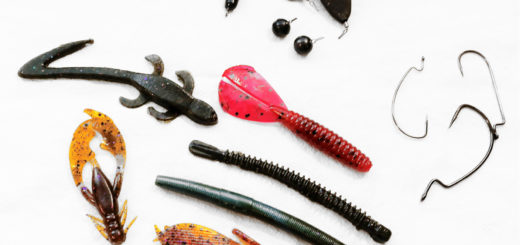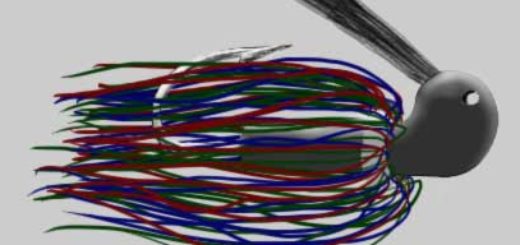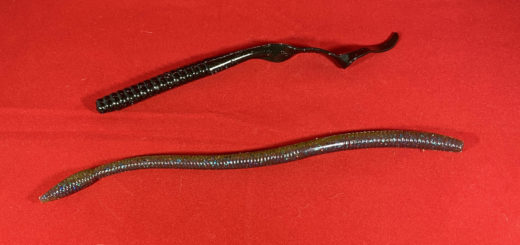An article by Ultimate Fishing (FishingTackleLures.com.au)
Spoon Lures:
The most simple and effective lures on the market, they compose of something looking like the end of a spoon, with two holes top and bottom, one side is a swivel clip and the other is a hook attachement. They often come with a single regular style hook at the end, but some also come with treble hooks.
They are very cheap to buy, easy to make and easy to use. The single hook ones are often able to be fished through weeds with ease, a benefit spinning blade (spinner) lures do not have.
Spinner Lures (Spinning blade lures / Spin lures)
The spinner is an evolution of the spoon lure, while they still use one or two spoon shaped ends, they are attached to a main rod, either by a swivel or with a crescent shaped piece of metal that holds the spoon in place. These are designed so that the center shaft is pulled through the water, and the blades then spin freely, sometimes in the case of spinnerbaits there is also a soft plastic grub or similar on the end, making these lures look like a small school of fish, very attractive to perch, bass and many other predatory species.
The regular spin lure however is a central shaft, with a spoon attachment, and an attachment below which aids the water to extend outwards, causing more spoon rotations, they end with a treble hook and are made for high speed retrieves.
Surface Lures (Poppers)
Poppers or otherwise known as surface lures are almost cylinder style shape, with a half circle indent at the front, as they are moved through the water, they create ripples at each side, this disturbance catches the attention of fish, who detect this in a similar was as we do to regular sound waves. Their idea is to imitate a frog, small lizard, or small mouse, which regularly cross the water on the surface to get to new areas.
Some surface lures today have avoided the popper pattern all together, and instead are frog shaped for trout, perch and bass, or even mouse shaped (for areas where a lot of ground mice are known to be).
Diving baits / Hard Body Lures / Crank-baits
The name crankbait comes due to the fact these lures have a diving lip on the front, the rest of the body is designed to look like a bait fish, when the fishing reel is ‘cranked’, the lure goes from floating on the surface, to a fast deep dive, once at the desired depth, the speed of return is lowered to keep the lure at this depth, these lures are the most commonly used by more experienced fishers, and are excellent at getting down deep where the target fish are safely camping out for an easy feed.
Soft Baits / Swim Baits / Soft Plastics
Soft baits or soft plastics are exactly as you would imagine, a soft rubber / plastic lure, sometimes with a lead weight inside as is the case with most swimbaits, other times you will attach a jig head which contains the hook, a varying lead weight at the front, and an attachment for your fishing line. Soft plastics are excellent for fishing the bottom of water bodies, their heavy weight drops them to the bottom of the water fast, and by jerking the rod upwards a few times with the fishing line tight, makes this seem like a distressed bottom dwelling fish, extremely popular for perch fishing when the lure is dragged through weed beds, perch love weed beds to hide in and wait for a small minnow to come past, so a soft plastic coming past in this manner is often a good trick.
Weedless jig heads are heavily recommended when fishing soft baits, especially for perch when going through weed beds, to ensure the best travel and avoiding any snags.
Soft Plastic Jerk Baits
These are often realistic looking baits, with a small Y shaped tail on the end, these baits need to be moved and active in the water to be effective, you have to try and draw as much attention to these lures as possible, as their realistic looks will attract fish, but only if they know where your bait is. Extremely temping and very fun to fish with, these lures often account for many fish in an outing, and can be coupled with a weedless jig head with a small amount of weight to get them deeper in the water.
As you can see, there is a large amount of choice involved for choosing different types of fishing lures, depending on the water conditions, target species and types of minnows in the water where you are fishing, will determine what types of lures you will need.
We hope this brief introduction into the world of lure fishing has been informative enough to get you started, and try out a few different types of lures instead of aiming solely for live or dead bait fishing.















